[GETTING DOWN TO] BRASS TACKS (1) – PRIMING OPTIONS
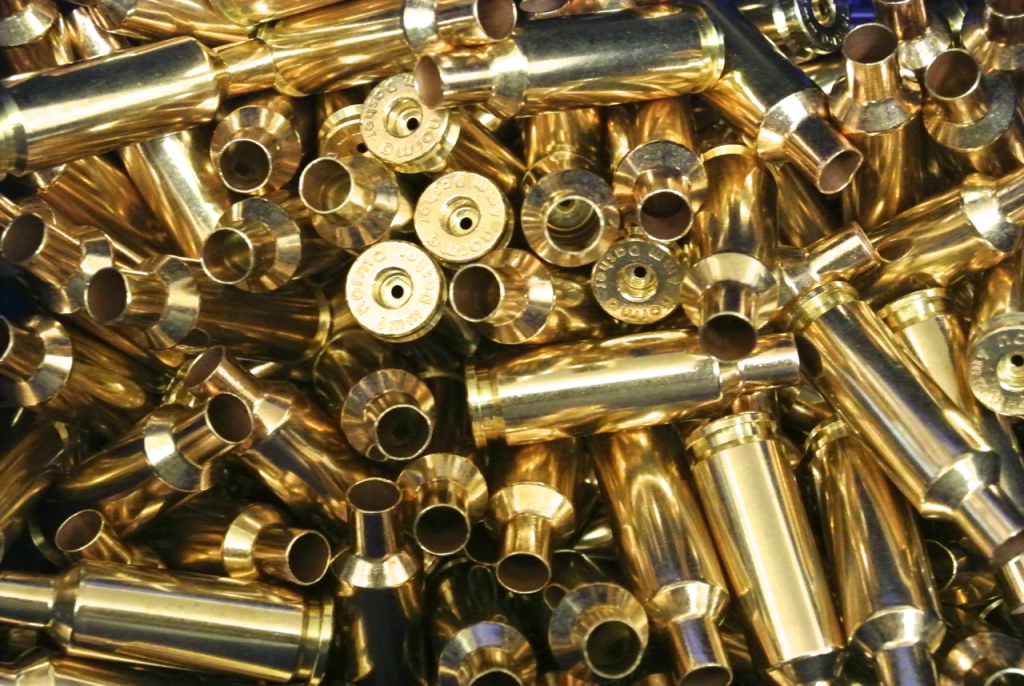
[Definition: returning to basics] ……… and what can be more basic in handloading than the cartridge case, often collectively described by a single word – ‘brass’? So this, the first of a series of observations on various cartridge and handloading issues looks at the various forms of case priming now available to us, and attempts to outline their potential benefits and pitfalls.
Large vs Small?
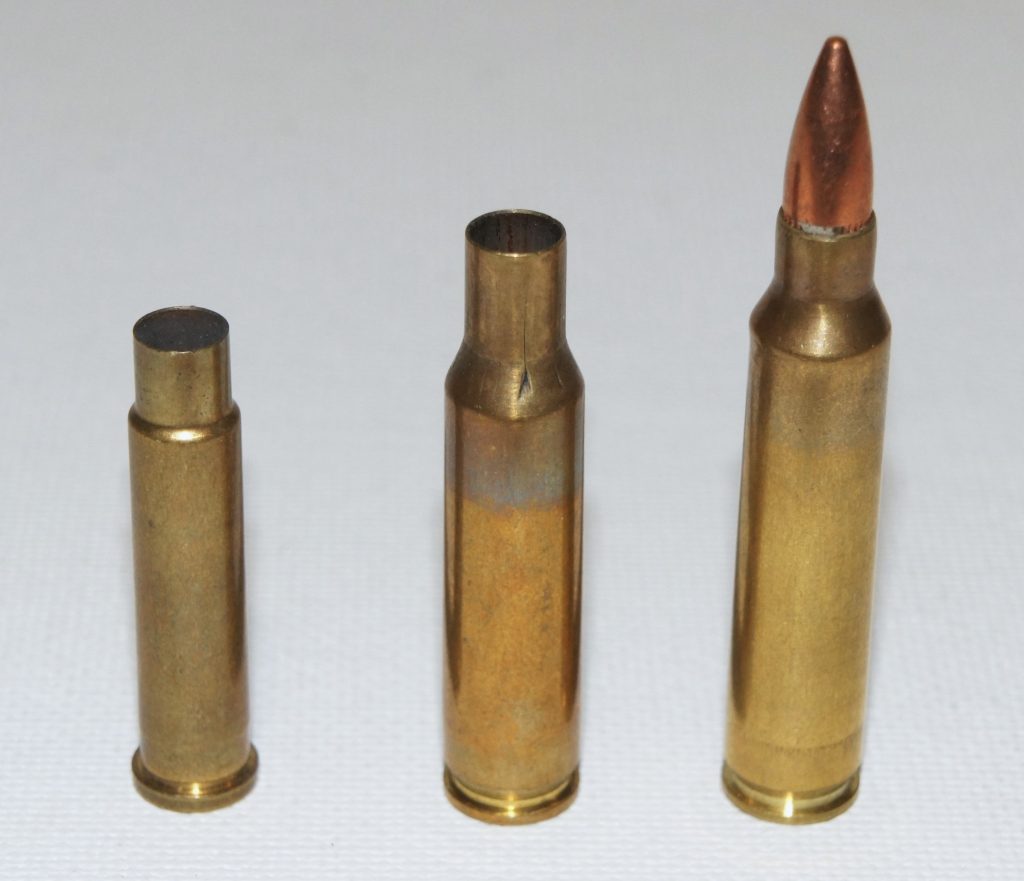
Once upon a time, things were simple – low capacity, narrow-body rifle cartridges used Small Rifle (SR) primers; larger/fatter and most early 20th century cartridge designs used Large Rifle (LR). Small primers were used in some revolver and pistol cartridges from the late 19th century, but the rifle version only really arrived with the 1930s .22 Hornet and other small rimmed varmint numbers, its use expanding greatly after 1950 with the arrival of the .222 Remington, subsequently the 1960s US military adoption of the 5.56 followed by the rest of NATO a decade later, alongside several small sporting cartridge introductions. Until the 1960s, everything used a common flash-hole diameter, 2mm (0.079-inch).
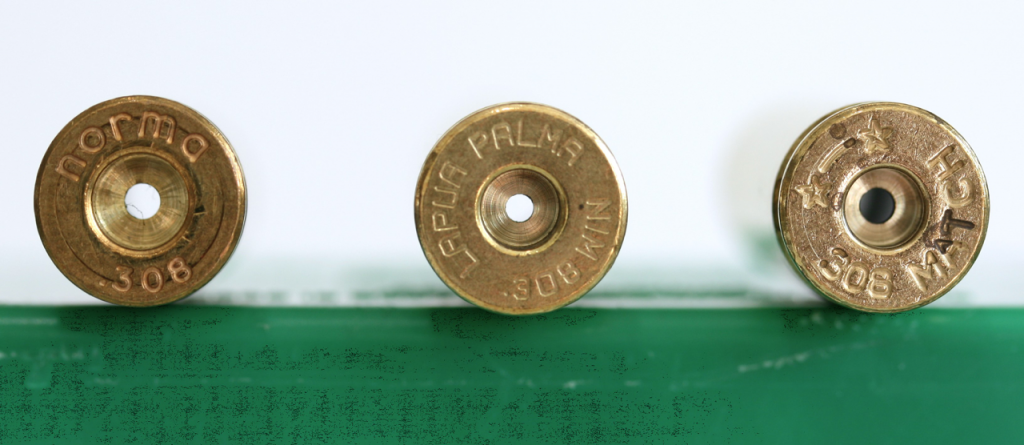
That was then, but now we find four different systems in use, some optional with up to three versions of a single case. Understandably, there is confusion especially for newcomers to handloading, and even among sales assistants in gunshops. The four are:
- ‘Traditional’ options only. If you buy 222 or 223 Rem cases, they only come with SR sized pockets; if 30-06 only LR. All incorporate 2mm flash-holes. When in doubt as to which primer is needed, simply refer to the cartridge drawing and specifications that accompany the loads tables in your handloading manual, or other data source. A very few small-case designs are available in either form depending on the maker – 6.8mm Remington SPC (LR from Remington; SR from Hornady); 7.62X39mm Soviet (all military LR, likewise commercial brass bar Remington which chose SR).
- A few small or modest capacity precision orientated designs where SR priming is standard, these first appearing in the 1960s. They have ‘fatter’ case bodies and larger diameter heads than 223 Rem et al, but use SR priming to enhance precision and MV consistency. An integral element of such specialist SR adoption was a flash-hole diameter reduction from the standard 2mm (0.079-inch) to 1.5mm (0.059-inch). The first such small primer / small flash-hole designs – still going strong today – were the .220 Russian/PPCs and BR Remingtons, the latter now in its enhanced 6mm BR Norma form, (not to forget several ‘improved’ variants). Their numbers have grown in recent years – 6.5X47mm Lapua; 6.5mm Grendel; 6mm Hornady ARC; most recently 6mm GT which US company Alpha Munitions makes with the GAP headstamp name and which Lapua has also adopted and will start supplying later this year.
- Note though that Alpha and Hornady use the 2mm flash-hole in their 6ARC, 6.5 Grendel, and 6GT products whilst Lapua uses the smaller 1.5mm version in the Grendel and will almost certainly stick with that in the 6GT. For this and other reasons, I would reform Lapua 6.5 Grendel cases to the ARC form rather than use the Hornady variety if I ever had a rifle built for this little cartridge. Those larger (than 6.5X47mm) case designs of up to 308 Win size/capacity with the common 0.473-inch dia. case-head diameter offered by some makers in both ‘traditional’ LR/2mm flash-hole and optional SR/1.5mm flash-hole versions. This group is typified by the Lapua ‘Palma’ 308 Win case introduced in 2009 and since adopted by specialist US case maker Peterson Cartridge Co. and others. (Peterson also offers both LR and SR versions of 243 Win, 260 Rem, .22/6mm/6.5mm Creedmoor, 6XC Tubb; Lapua produces the normally LR primed 6.5mm Creedmoor case in both forms.)
- Finally, as per the previous category, with both size primer pocket options, but retaining the 2mm flash-hole in both LR and SR versions. This is apparently becoming the dominant form when makers offer such cases in both primer sizes. Hornady, Starline, and Alpha brand cases fall into this category with the choice of both LR and SR versions of some case designs, but using 2mm flash-holes in everything. Alpha Munitions says it trialled its SR 308 Win cases with both flash-hole diameters and found the larger (2mm) size ‘better’ (but doesn’t specify in which particular respects). Prvi Partizan (PPU) changed its 6.5 Grendel cases from LR to SR priming some years ago, and likewise retained the 2mm flash-hole. Nosler has also just introduced SR versions of its 6mm and 6.5mm Creedmoor cases which probably adds another manufacturer to this (SR / 2mm flash-hole) list.
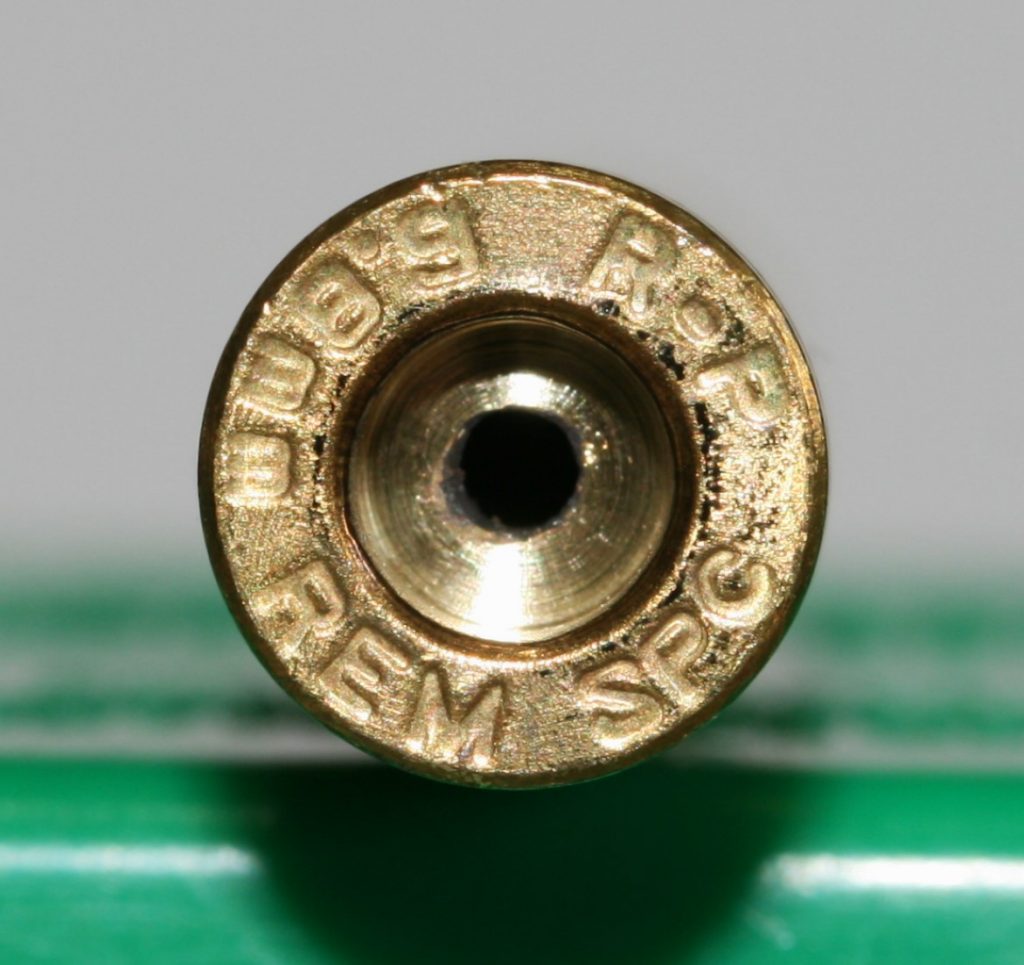
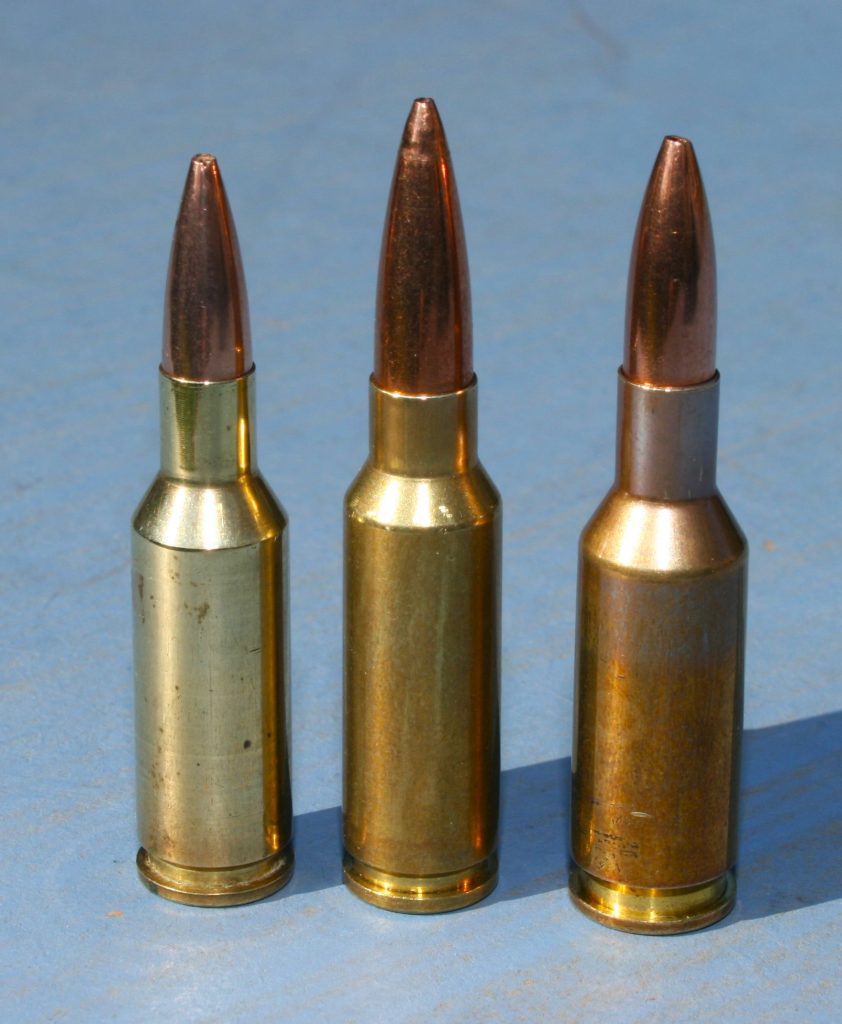
Confusion or Opportunity?
One can see why many shop staff, not to mention their customers are confused by the range of permutations – and that’s before we get to their pros and cons in use. Coincidentally, this post recently went up in an American precision shooting forum from a first-time handloader:
“I have once fired 6.5 Creedmoor brass that I have prepped, deprimed/resized. I started working on priming today, and I have run into a problem.
I have Federal SRM primers, GM205M. They do not seat in my brass. They will fall into place. Like they are too small. And not seat.
What am I doing wrong?”
Putting occasional confusion over which size primer is needed for such dual ignition types to one side, the flash-hole diameter is more likely to be overlooked, and causes its own problems given that the smaller 1.5mm version is sometimes a feature of SR primed ‘special options’. It produces a basic mechanical issue in reloading those cases such as .308 Win which are traditionally LR primed with a 2mm hole – the decapper pin diameter on the sizer die, also most ‘universal’ decapper dies. Sizing dies for many such cartridges usually have a pin that is oversize for the 1.5mm / 0.059-inch flash-hole at around 0.072-inch. In the early days of the Lapua ‘Palma’ 308 case, insufficiently wary handloaders often sized the first case in a batch apparently successfully, then found that every subsequent case retained the spent primer. That first case broke the pin, or frequently it went into the flash-hole, ejected the primer, but retracting the case from the die left the pin stuck fast in the flash-hole having pulled it out of its holder on the die stem.
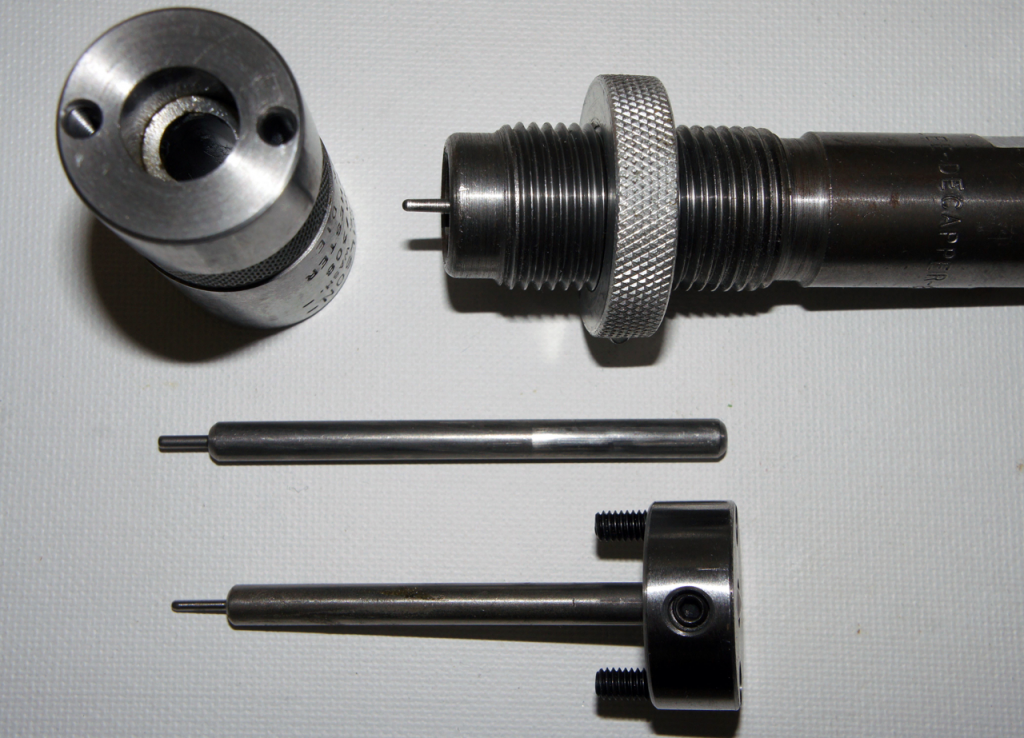
Die manufacturers make their pins, if replaceable, in both sizes, but being able to buy a small diameter version subsequently is little comfort to somebody loading ammunition the evening before use. Since then, manufacturers have become aware of the issue and some have reduced the pin diameter to suit either type. Nevertheless, it is important to check the pin on your 308 Win, Creedmoor etc die slides through the flash-hole freely before first use if you’ve opted for the SR / 1.5mm flash-hole combination. (On cartridges like the 6BR and 6.5X47mm Lapua which always have a 1.5mm hole, die manufacturers automatically provide suitable size pins on their tools.) Very robust one-piece stem/pin decappers as in Lee and Hornady dies will stand up to being forced into smaller diameter flash-holes, for a while anyway, but swage them larger in the process – also undesirable.
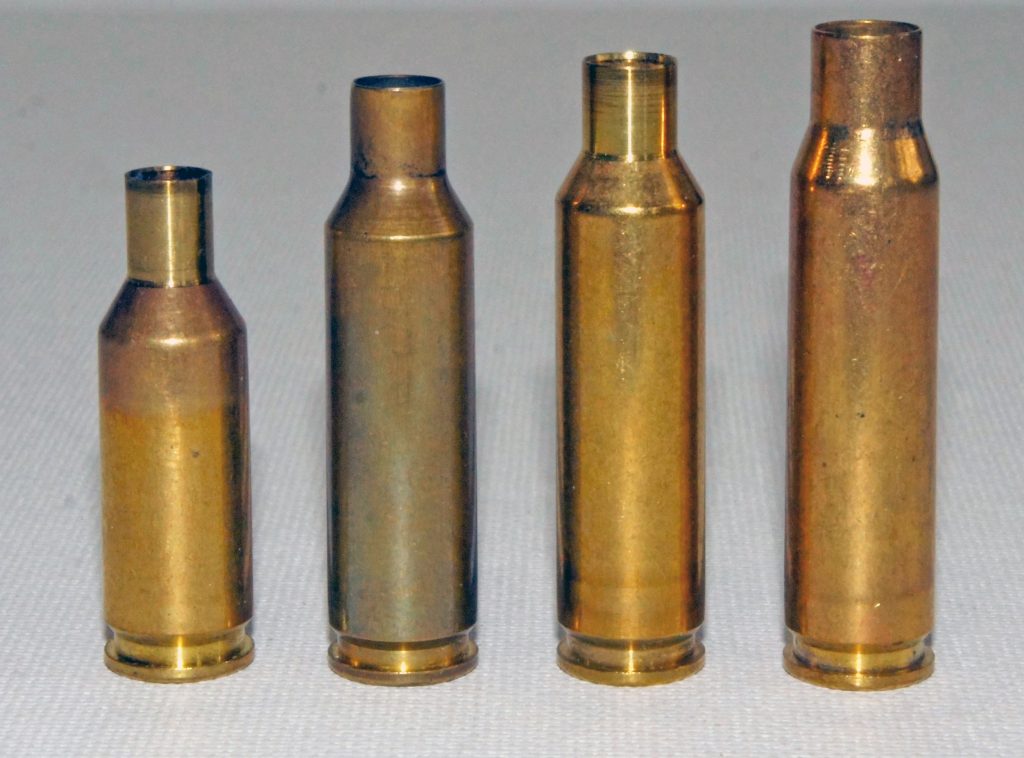
Some people are unimpressed by multiple case purchase options and decapper pin situation. ‘What a dog’s dinner!’ they say. ‘Why couldn’t people just leave well alone?’ Others look at the potential benefits and seize the opportunities, researching the issues and how to best exploit SR priming opportunities. The sceptics, and maybe others, might also query these variations given that cartridge dimensions are tightly specified by the regulating bodies, the CIP and SAAMI, so they must surely list the correct primer and flash-hole for each cartridge, which manufacturers should comply with. Actually, they specify neither feature and leave the choice entirely up to manufacturers and users. (We even had electric ignition on a Remington 700, the expensive EtronX model, some years back which needed special, also very expensive, primers – not a success.)
For those new to this situation, what are the pros and cons of SR vs LR ignition where there is a choice as in the Creedmoors and 308 Winchester?
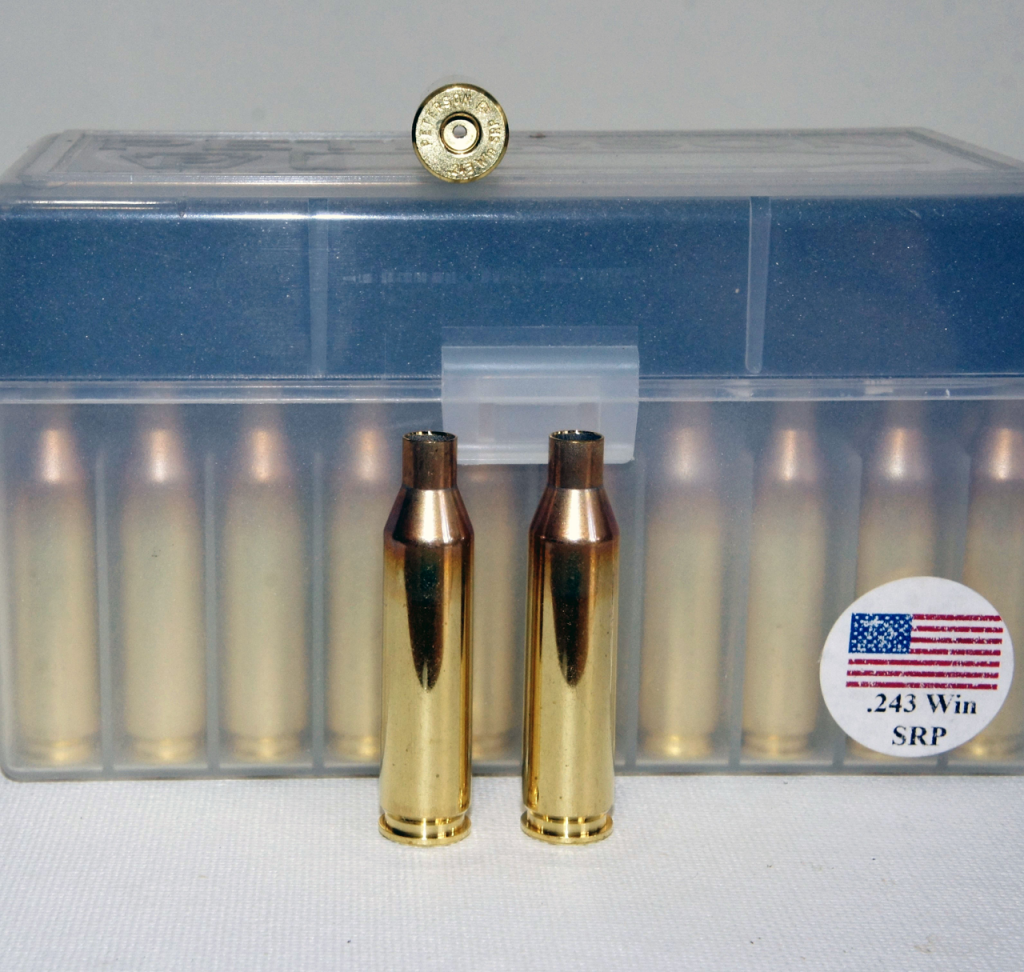
SR Ignition Upsides
First, less aggressive ignition that often gives a more consistent charge burn and reduces MV spreads and SDs. This was the rationale for the US Palma teams approaching Lapua in the aughties and working with the company to first produce and test prototype examples, then put the SR 308 ‘Palma’ case into general production and sale. Extensive range tests in many ‘Fullbore’ match rifles and barrels comparing it against the standard contemporary US ‘Palma’ load combination of Lapua case, LR ‘match’ primer, 155gn Sierra MK bullet, and Hodgdon H4895 or VarGet powders saw a reduction in MV SD values of a quarter to a third. With 1,000 yards the longest stage of the Palma competition course, reducing MV spreads is important to limit the elevation range of bullet impacts. It was found that SR ignition reduced the average MV over the LR case equivalent, but that was easily compensated for through a small charge increase and precision (group size) was unaffected.
The small diameter flash-hole is, or perhaps I should say was, an integral part of the system. In small precision cartridges such as the BR, it has been proven that increasing its size more than a small amount also increases the MV spreads, likewise groups. Whether this applies to as great an extent, or even at all, with 308 size cases is more open, Alpha for one claiming otherwise. SR ignition may or not reduce group size over LR equivalents in the Creedmoors and 308 case based cartridges, much depending on the primer / powder combination. It did when I carried out SR primer tests in 308 Palma brass and used the same work-up loads in standard LR 308 Lapua cases as a ‘control’. https://www.targetshooter.co.uk/?p=2621 Note too that the SR version saw a much larger MV reduction than expected needing an extra 1.4gn of Viht N150 to match LR velocities. However, when I tested the then new Viht N555 powder in 7mm-08 Rem (https://www.targetshooter.co.uk/?p=3683), groups and MV spreads both increased in SR brass compared to LR, both versions again from Lapua, but with far less impact on average MV values.
Secondly, the smaller primer pocket swaged into the case-head sees a thicker ring of metal around it increasing case-head strength. This is probably why PPU switched from large to small priming in its 6.5mm Grendel brass, users complaining of short case life with the original form. Lapua’s (and I’d imagine Peterson’s too) SRP versions of cases with the standard 0.473-inch head diameter as in 6BR / 6.5X47L / Creedmoor / 308 Win are known to be exceptionally tough accepting repeated loadings producing maximum pressures. Before the SR ‘Palma’ 308, the standard Lapua LR version would see cases scrapped after half a dozen loadings due to slack pockets in heavy long-range F/TR or ‘Match Rifle’ loads, whilst the otherwise identical SR ‘Palma’ case easily achieves double-figure firings at the same high pressures, potentially many more still with shoulder / neck annealing to reduce work-hardening stresses in that area. (This does of course encourage some to use that strength to produce even higher MV loads which must sometimes result in ‘hairy’ pressures.)
SR Downsides
The first of these isn’t an ignition system / internal ballistics issue, but the present primer supply problems and vast price increases may influence purchase decisions to one form or other where choice exists. As I type this, it is LR primer availability that’s a problem, but a couple of years ago SR primers simply couldn’t be found in the shops on either side of the Atlantic for a year or more creating a headache for shooters of SR-only cartridges.
Of the true ignition / internal ballistics based possible downsides, the first and primary one is that SR ignition may struggle to supply sufficient heat and energy to the powder charge in those cartridges with greater case capacity than the 6.5X47mm Lapua with its 35-40gn maximum charge weights. It isn’t just the larger quantity of powder / number of kernels to be heated up to ignition levels, but the increase in area of very heat-absorbing brass case walls. The 6.5X47L case measures c. 1.36-inches from the top of the internal web to the bottom of the case-neck; the .308 Win and those cases based on it have an extra 0.19”, around 14% which will see a similar increase in wall area. This potential problem is exacerbated in ambient temperatures where powder kernels and case-walls start off very cold, so as a result Lapua long advised that its 308 ‘Palma’ case was ‘unsuitable for hunting’. (Not now though, the blurb concentrating on Lapua’s new packaging and the temporary suspension of manufacturing this model.)
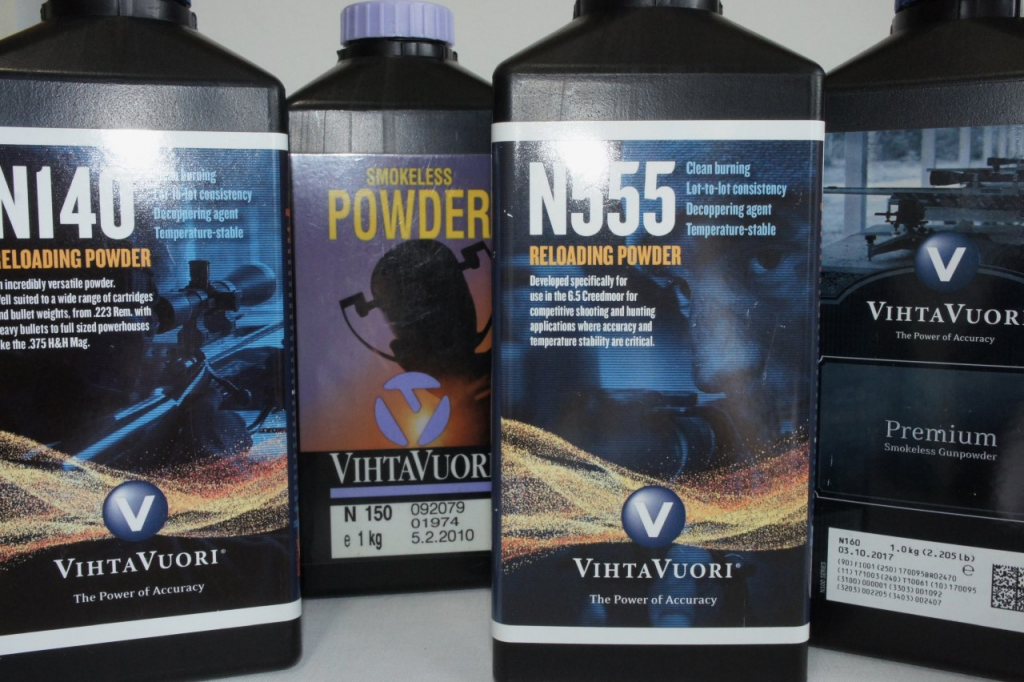
Linked to possible marginal ignition capability, SR brass may not suit all powders in Creedmoor and 308 size cases given that powder types and grades aren’t created equal in the matter of ease, or otherwise, of inciting consistent ignition. When I did a mid-winter cold-weather test with a small range of powders in the then new 308 ‘Palma’ case 12 years ago, I obtained excellent results with Viht N150, but disappointing ones with its N140 stablemate. Rerunning the latter in warmer conditions later in the year saw both groups and MV ES/SD values improve markedly. (Why the different results for two such apparently similar grades? Possibly kernel dimensions and the resulting surface areas as N150 has longer and fatter kernels than N140; maybe a larger diameter hole up the middle; or a thinner ‘deterrent’ coating.) Such problems led critics and Internet keyboard warriors to allege that SR priming is not up to the job in cartridges with larger cases and charges than 6.5X47mm Lapua, especially when coupled to the 1.5mm flash-hole. However, as the saying goes, the proof of the pudding is in the eating and long-range F/TR competitors worldwide overwhelmingly choose SR 308 Win brass, likewise many shooting other precision disciplines. In the opposite corner, David Tubb tried both LR and SR priming in his 6XC during its development it and chose the large primer version after it produced better results.
I should add that just as not all powders are created equal in how readily they ignite consistently, neither are all primers equal in their energy content and brisance. There is nothing new in people finding that one primer model (and that includes LR models too) may be noticeably better / poorer than another in a particular cartridge and powder combination, but this partiality may be greater, or encountered more often, when weaker SR primer / small flash-hole ignition is employed.
Returning to personal experience, I have the aforementioned 7mm-08 Viht N555 test experience where LR priming was superior across the board, and a try-out some years back of the then newly introduced Hodgdon CFE-223 ball type powder which worked fine in Lapua LR 308 Win brass, but saw hangfires and a couple of misfires in ‘Palma’ cases with the same bullets. Nevertheless, I have fired literally thousands of 308 Win case-size SR versions happily over many years in all seasons loading various powders with excellent results, likewise several primer models, and I regularly shoot in matches where other competitors obtain great results with SR priming in yet more calibres / cartridges / powders.
In the absence of very serious, obvious, (and potentially dangerous) problems like hang and misfires, how do you know if SR ignition (or primer choice generally) is marginal for your cartridge / powder / bullet combination? Sometimes, but not always, through larger short-range test groups, more reliably through MVs with large extreme spreads and SDs. When ignition ‘marginality’ becomes inadequacy, MVs are seriously reduced and spreads become huge (as in three-figure values for me with 308 ‘Palma’ brass and CFE-223 in most strings). So, yet again, a chronograph is an invaluable load development and testing tool. I’ve said that I’m not necessarily a fan of the Starline / Hornady / Alpha small primer + 2mm flash-hole combination (probably just my innate conservatism), but it does have an upside, no stuck decapper pins aside, in that it seems that where SR ignition-energy is marginal, the wider primer flame jet from the 2mm flash-hole produces an improvement.
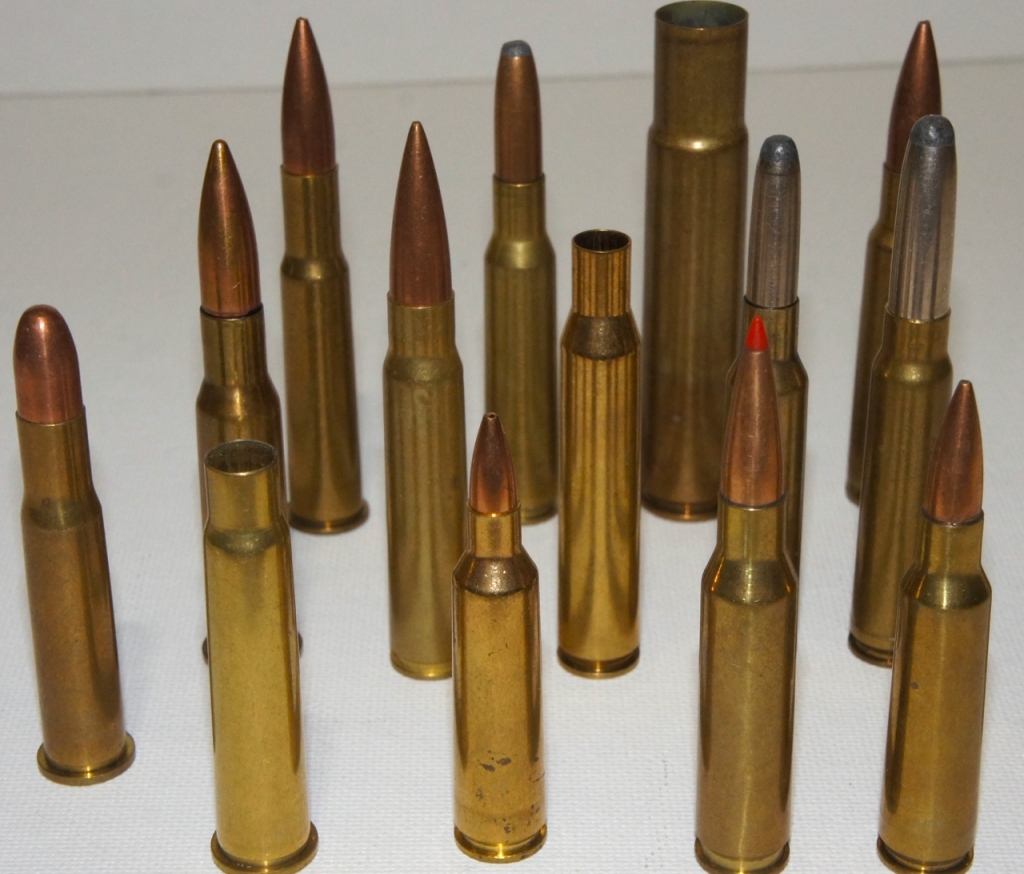
Another related performance consideration with SR vs LR primed versions in those cartridges where you can buy both forms is that of maximum and/or optimum charge weights. As the SR / small flash-hole version usually produces lower MVs and pressures for any given charge weight, you are unlikely to obtain optimum results by simply swapping loads between the two case types, each needing its own final load development. If you must do this, it is generally (but not guaranteed) safe to use charges worked up in LR primed cases in the SR version – but not vice versa. A heavy / high pressure load in SR brass may be considerably over the top if the large primer case is substituted. This applies even more than usual to adopting other people’s ‘pet loads’ off the Internet or in range house conversations. As SR brass is so strong, some of these loads may already generate pressures that exceed SAAMI/CIP maxima. So, putting them in weaker LR cases whose more aggressive primers generate still higher pressures is a recipe for blown primers. Or worse! As always, cross-check such unofficial data against those from the manufacturer. Incidentally, note that Viht’s loads data for the 6.5mm Creedmoor are for the Lapua small primer case, whilst most other loading data use LR models when both types are available.
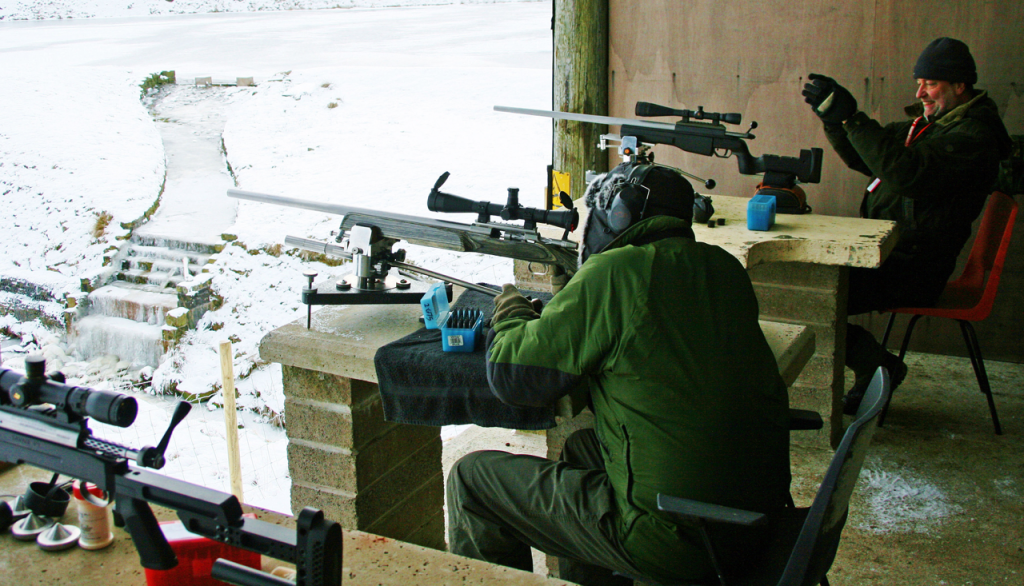
The second main SR priming system downside is, as with the decapper diameter, a mechanical rather than internal ballistics issue – the rifle’s firing pin diameter and its fit in the bolt-face aperture (more important, the amount of clearance around the pin-tip). For some reason or other, SR primers are far more prone to serious cratering and what most shooters call ‘piercing’ the primer cup (properly, primer ‘blanking’) than their LR equivalents. This doesn’t only affect our BR, 6.5X47L and 308 ‘Palma’ users, as small SR-only numbers such as the 223 Rem are often badly afflicted too. I had a 308 Win FN tactical rifle rebarreled to the then new 6.5X47 Lapua many years ago and after severe cratering and some blanked primers with loads using Viht’s low-pressure starting charges, had to get an FAC ‘variation’ for 260 Rem and have the barrel rechambered for this LR primed cartridge. This was a rifle, not pressure, problem. Note however, the GB NRA classes both conditions as being excessive pressure indications in its new handloading Code of Practice which most of us are signing up to: (bold, red type in the NRA original) Note the wording ‘Signs of excessive pressure are:’ not ‘may be:’.
Section 5 Excessive Pressure
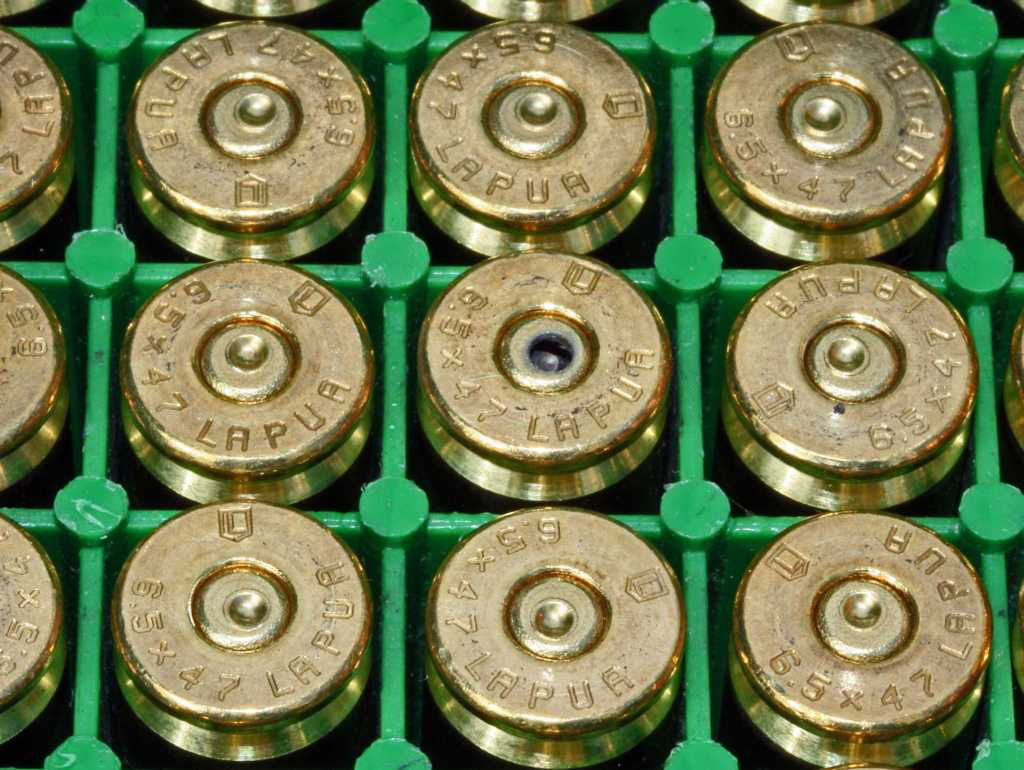
5.1 If you see signs of excessive pressure, stop shooting immediately. Signs of excessive pressure are: cratered primers and pierced primers.
However, not so in all instances and, whilst a situation to be avoided or rectified, these occurrences are in many cases a firearm feature when allied to the small primer cup, not a result of excessive internal pressure. (I’ve owned three rifles with Savage PTA single-shot target actions over the years, two for small cartridges that only come with SR primers. None has been good in this respect, but one is worse than the others. It produced severe primer ‘cratering’ in its out of the box Savage 12 LRPV factory rifle with factory Hornady 204 Ruger cartridges which whilst loaded ‘hot’ are supposedly guaranteed to be within SAAMI maximum pressures. Had I not turned to 100% handloaded cartridge use in the rifle, I have little doubt that ‘blanked’ examples would have followed ‘cratered’ just as night follows day.)
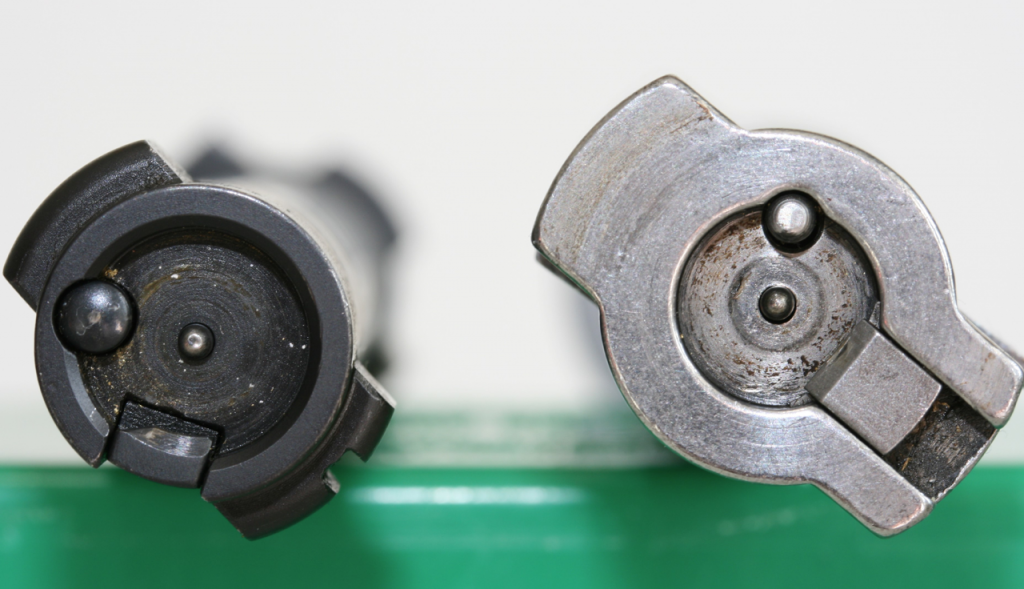
Back when American custom 6BR varmint and competition rifles were often built on repurposed Remington 700 actions, this was a chronic problem. Some US gunsmiths, led by an outfit called Gre-Tan Rifles, offered a pin turning plus bolt-face bushing service with your bolt done and returned within ten days, having created jigs to hold the bolts of all common US made factory rifles. Reduce the pin diameter and take away excessive clearance around its tip, and cratering also goes away. It’s only relatively recently that our gunsmiths started providing this service and the cost quoted was £300 the last time I asked. Similarly, when many Accuracy International rifle users started replacing 308 Win barrels with a 6.5X47L equivalent, this cartridge design only available as an SR primed case, the company provided a special smaller firing pin / reduced pin-clearance bolt for such customers. (You cannot ‘bush’ AI bolts, likewise those of some other makes, as the steel is extra hard and moreover you void the maker’s warranty / customer support as soon as a machine-tool touches metal.) I suspect that it is more than coincidence that my tactical FN (designed to an FBI reliability specification for elite Hostage Rescue Team use) and the superbly made police marksman / military sniper AI rifles showed similar behaviours in this regard – professional users crawling through mud and other rifle action fouling nasties likely require generous firing pin clearances to ensure it retains its full travel and energy when a shot is taken.
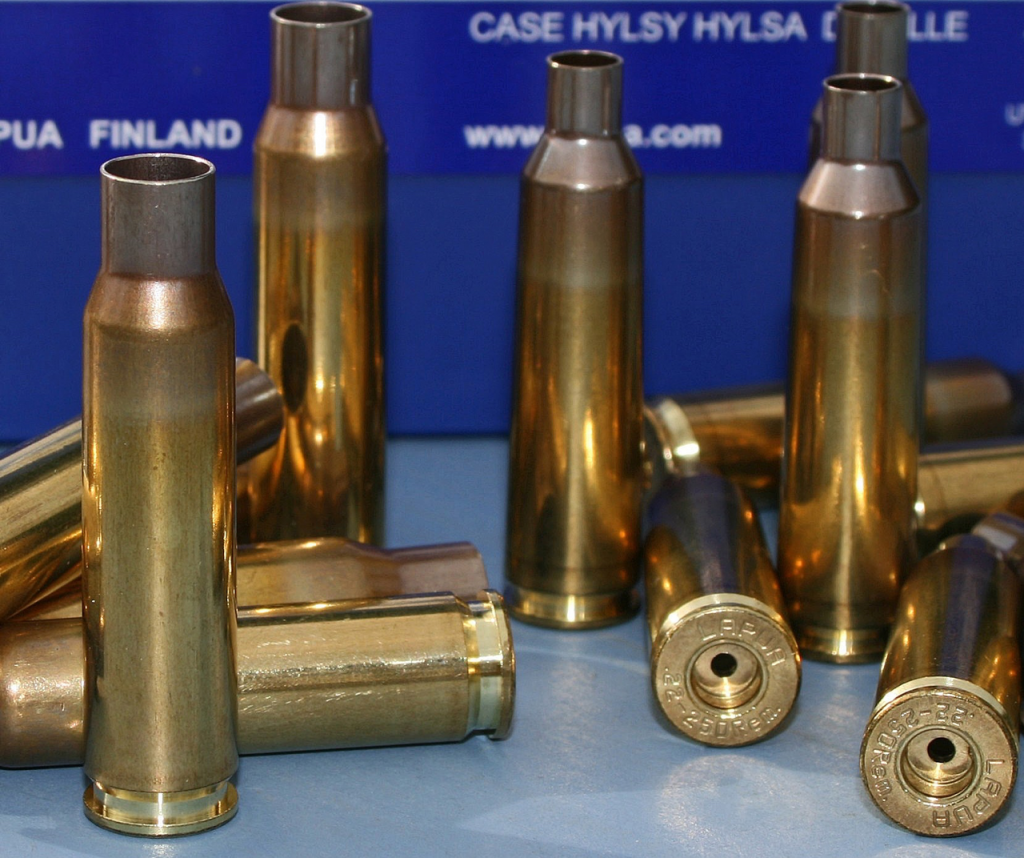
So, what to do if this worries you? If you have a custom target or tactical rifle action – BAT, Lawton, Barnard, RPA, Pearce, Kelbly Stolle, Defiance Machine, Impact Precision, Bighorn, Surgeon and suchlike – they are built with small diameter firing pins with small bolt clearances and SR primed cases should present no problems. Modern factory actions vary somewhat across both makes and between individual examples, the latter thanks to apparently large factory tolerances creating problems when a minimum diameter pin is paired with a maximum tolerance aperture. My Howa 1500 ‘Mini’ bolt is excellent in this respect, but others makes and models generate complaints. (I’ve noticed several recent forum posts about this problem with the popular Ruger Precision Rifle, so if you’re buying one in 308 Win or either of the Creedmoors, don’t necessarily rush to acquire SR primed cases when you buy new reloading gear and components, rather try both versions.) If you are contemplating using a small primer only cartridge on actions from the main US mass manufacturers or are worried about this issue in general terms, seek advice from your gunsmith and have him look at the pin clearance on your bolt when discussing the rifle build or rebarreling.
Incidentally, in a good tightly-chambered rifle built for high-pressure small primer match cartridges such as the 6.5X47mm Lapua, .308 ‘Palma’ and similar, the resulting fired primers may not display the fired primer indicators that are often seen in LR primed examples and traditionally touted as pressure indicators. In particular, another stop shooting immediately condition from the NRA Handloading Code of Practice:
5.1.6 Flattened primers
So, the shooter must look for alternative over-pressure symptoms with these cases as well as taking heed of the MVs reported by the chronograph – if MVs are significantly higher than normal or expected, then chamber pressures are almost certainly even more so.
In summary, the small primer and flash-hole combination is well proven with smaller capacity precision orientated cartridges up to and including the 6.5X47mm Lapua. With larger-case numbers, SR adoption, with or without the smaller 1.5mm flash-hole, is more contentious involving potential benefits and pitfalls. SR primed variants of Creedmoor and 308 Win based cartridges have proven themselves in many competition applications, and unlike many past short-lived ammunition ‘improvements’, this one is here to stay. As with all such variations from long established and proven practices though, it is neither a universal panacea offering instant tack-driving precision and single-figure SDs, nor as some detractors claim, an unneeded and inefficient step in the wrong direction.
